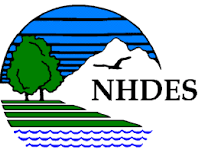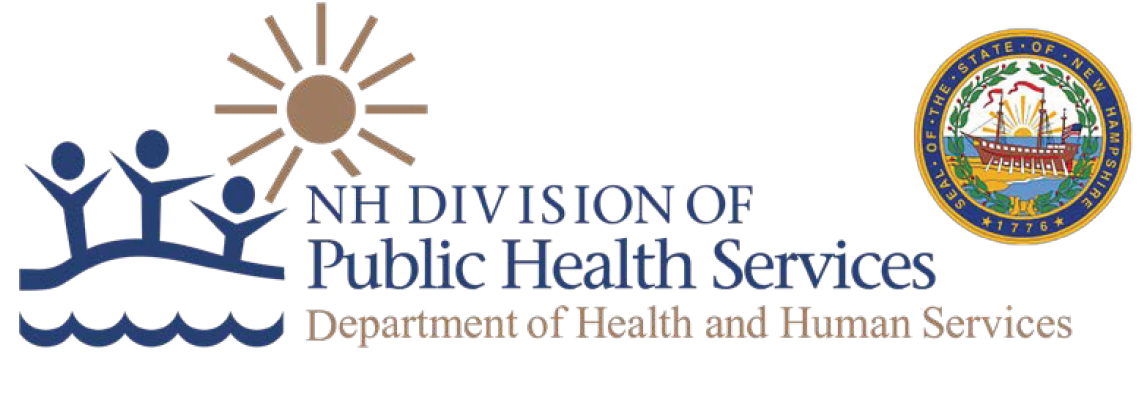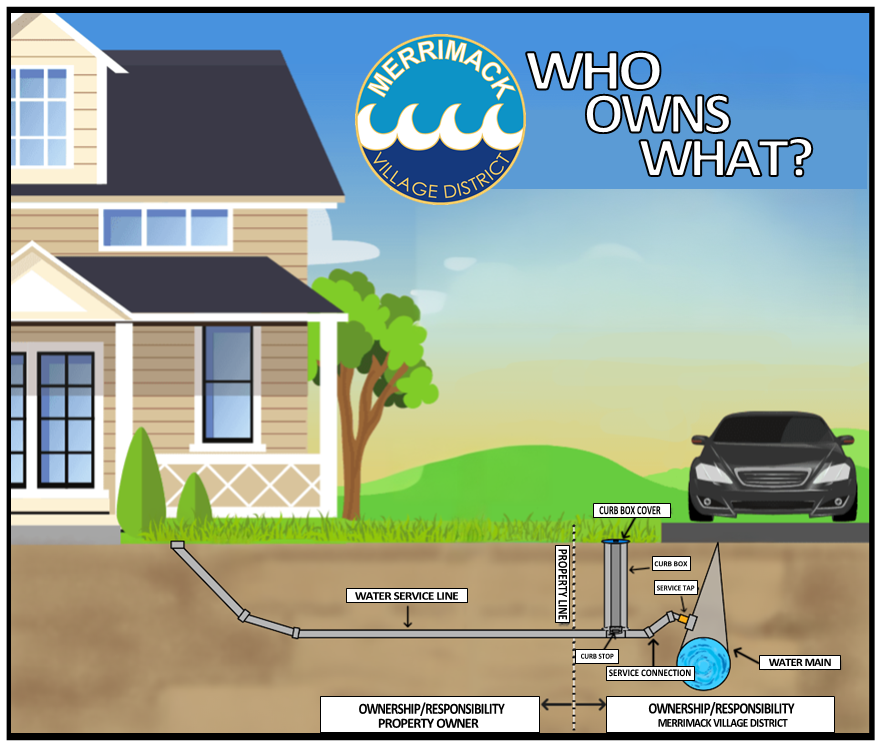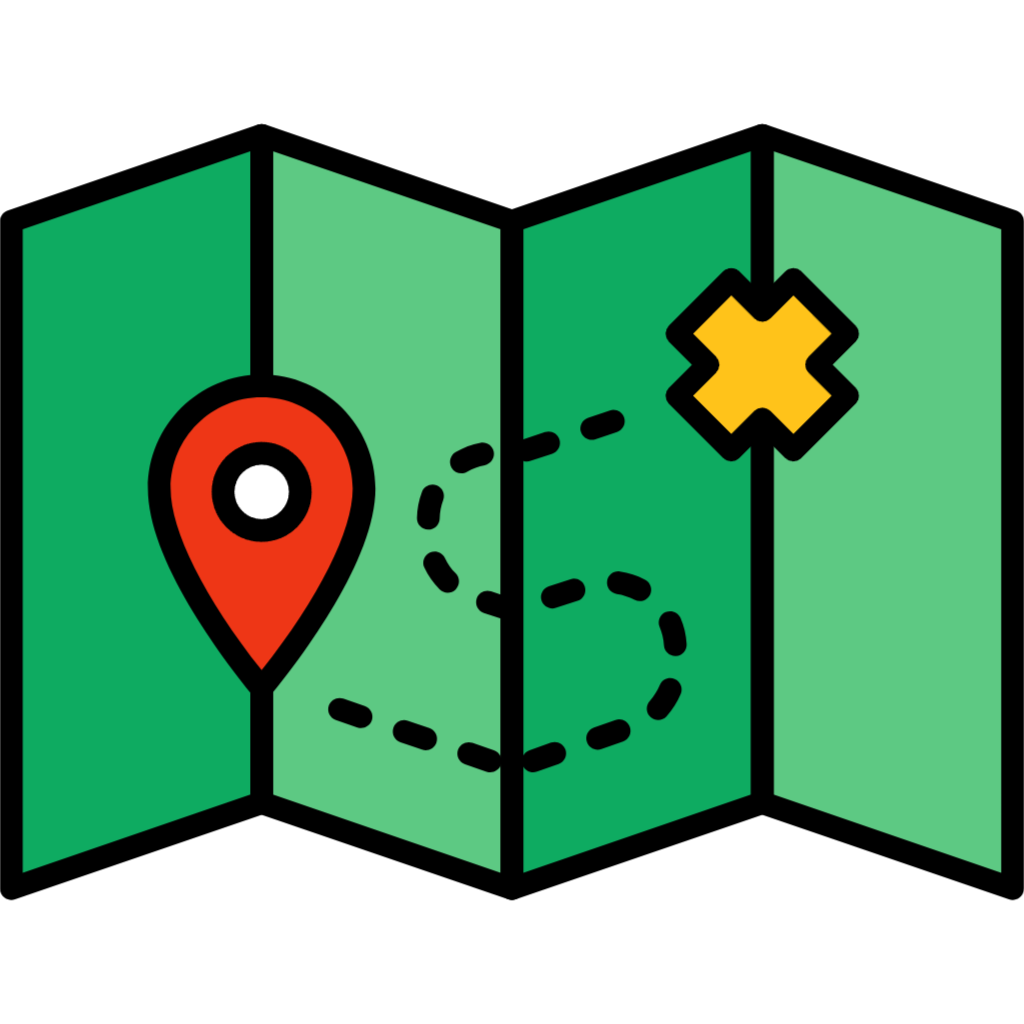WATER SERVICE LINE PROGRAM
(WSLP)
Click to view . . .
BACKGROUND INFORMATION
The United States Environmental Protection Agency (EPA) is responsible for setting drinking water standard and regulations for ALL public water systems (PWS) in the United States. In New Hampshire, these regulations are administered by the New Hampshire Department of Environmental Services’ (NHDES) Drinking Water and Groundwater Bureau (DWGB).
One of the many EPA regulations is the Lead and Cooper Rule (LCR), recently updated to the Lead and Copper Rule Revisions (LCRR).
While lead, in its natural state, is seldom present in New Hampshire’s drinking water sources, it can enter the water supply through the deterioration of pipes, plumbing fixtures, or the solder used to connect those components. As such, it’s important for property owners to know the material type for the internal plumbing as it could have a direct health impact.
Because of this, part of the LCRR includes the Lead Service Line Inventory and Replacement Plan (LSLI/R). The LSLI/R was developed to better protect against possible lead exposure in drinking water by providing information on the location and material type of each water service line connected to a public water system; the goal being identification and replacement of all lead water service lines as well as all galvanized steel downstream from a lead water service line as it can leach lead into the water. If the service line is identified as being lead or another material that can leach lead into water, it will need to be replaced.
The LSLI/R Plan also includes taking inventory, including the location and material type, of the following:
• The PWS owned portion of water mains/pipes that provide water supply
• The customer owned water service lines & plumbing at all service locations connected to the PWS.
Like all NH PWS, Merrimack Village District (MVD) is responsible for adhering to EPA and NHDES regulations. As part of MVD’s compliance with the updated LCRR requirements, we developed and are actively engaged in our Water Service Line Program (WSLP). One part of the WSLP initiative involves the inspection and documentation of water service lines and plumbing materials. MVD staff has been obtain this information while onsite at both existing and newly connected service locations during routine/scheduled appointments. Prior to the WSLP, MVD did not maintain any records of water service line or plumbing material information as these components are not installed, owned or maintained by MVD. Consequently, while we have successfully gathered information for a substantial number of locations, there are still many for which this information is not on file.
Locations that do not have the required information on file have been sent notification. In order to obtain the required information, MVD is requesting that locations which receiving the notice perform an inspection of the water service line at their location and provide the results to MVD.
If customers are unable to perform an inspection, an appointment can be arranged for inspection by MVD. Click HERE for “Water Service Line Inspection Information”, including instructions and submission info.
Once inspections are completed and the water service line material has been identified, MVD will update their records, share the information with the property owner, and if necessary, provide a recommendation for moving forward.
CAUSES OF LEAD IN DRINKING WATER
Lead can get into water as it passes through plumbing and/or faucets and fixtures that contain lead.
Faucets & Fixtures:
Those installed prior to 2014 do not meet today’s requirements for “lead-free.”
Copper Pipe with Lead Solder:
Before 1987, copper pipes were usually connected with solder that contained lead.
Galvanized Plumbing:
Galvanized pipes within the home/business can capture lead released from sources such as lead solder or a Lead service line.
Lead Paint:
If your home/business was built before 1978, you may want to get the paint tested for lead.
![]()
REDUCING EXPOSURE TO LEAD IN DRINKING WATER
Below are actions that may be taken to reduce exposure to lead.
Refer to “Helpful Resources” section on this page for links to information from the EPA,
the NHDES, and the Department of Health & Human Services (DHHS).
Temperature
Use cold water for drinking, cooking, and making baby formula.
Hot water can cause lead to leach out of pipes and plumbing.
Boiling water does NOT remove lead.
Run the Water
Before drinking or cooking, flush the pipes by running the tap.
The longer the water has been sitting in the pipes, the more lead it may contain.
Clean Faucets
Regularly clean the screens (also known as an aerator) on faucets.
Sediment, debris, and lead particles can collect in your aerator.
If lead particles are caught in the aerator, lead can get into your water.
Filters & Maintenance

Consider using a water filter certified to remove lead.
There are various types including water pitchers, faucet-mounted, under-sink, refrigerators, & more.
Follow the manufacturer’s instructions as well as the schedule for filter replacement.
Old Fixtures










